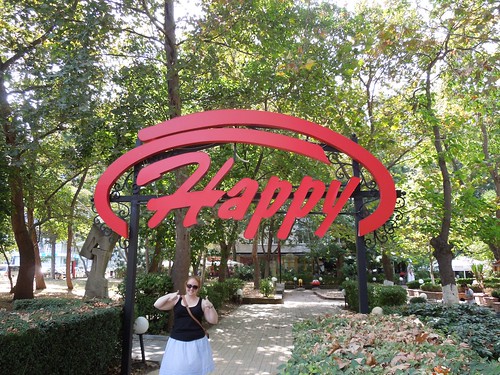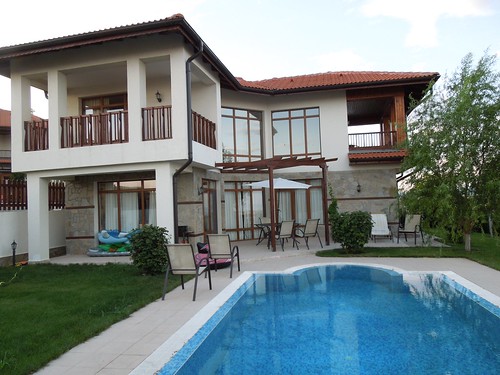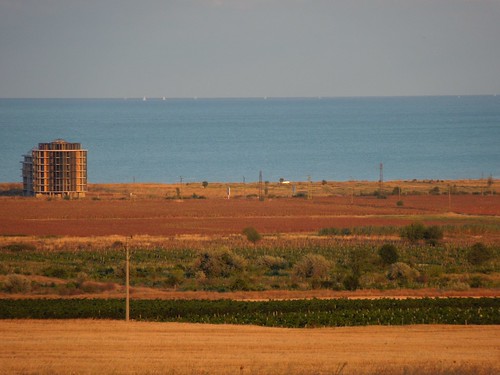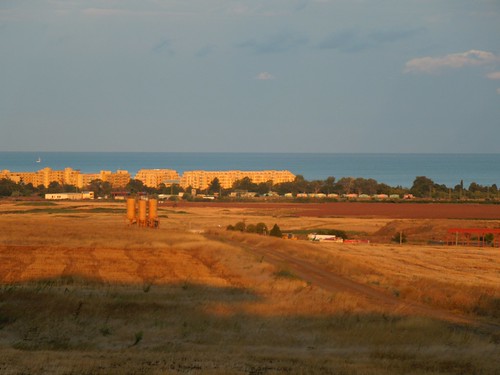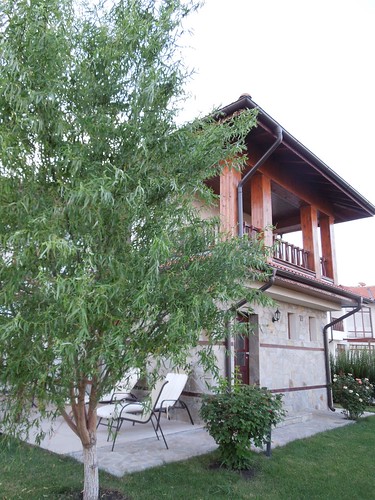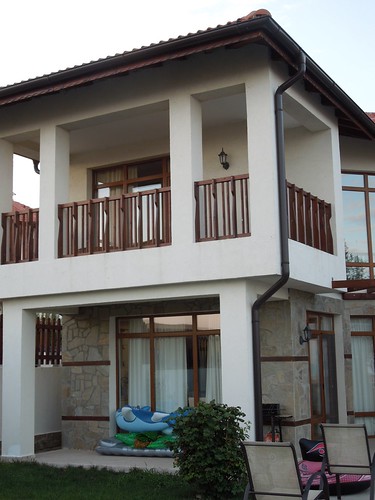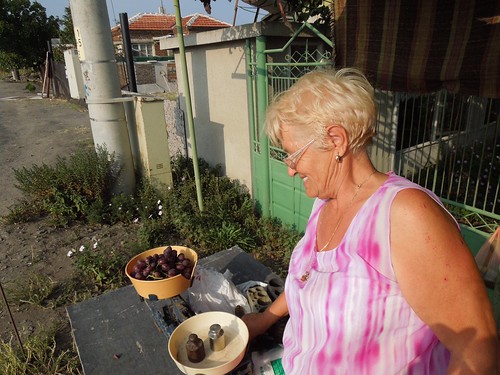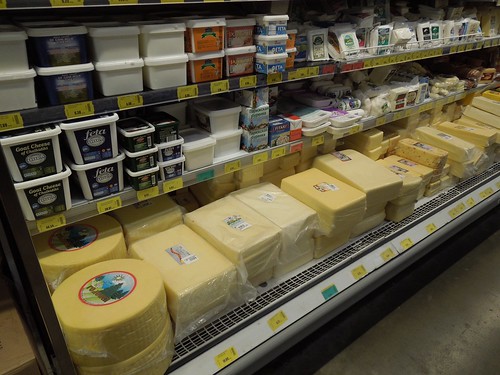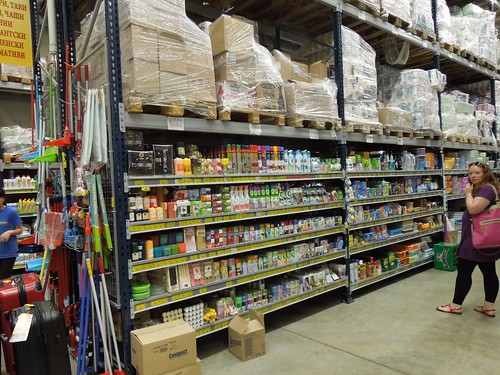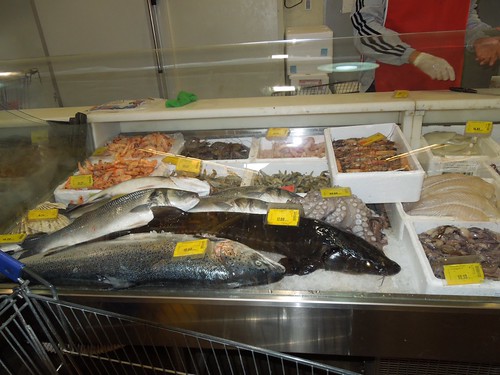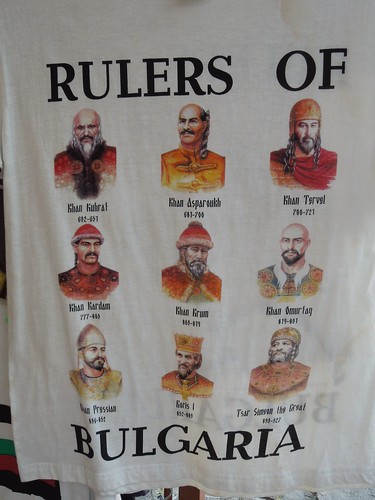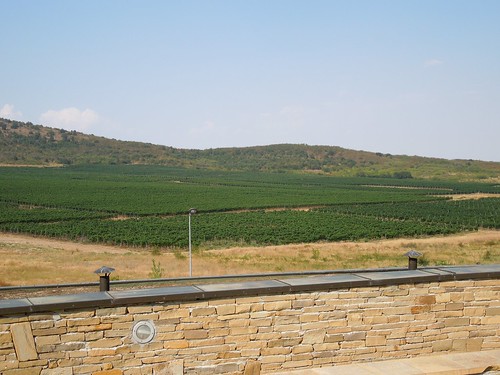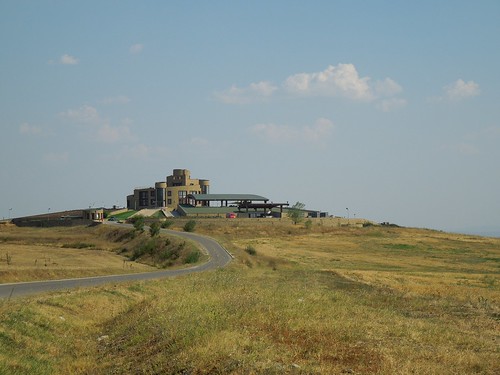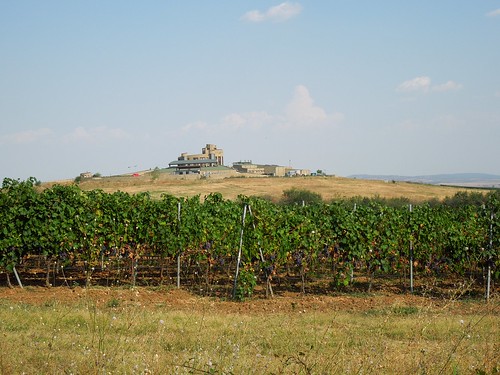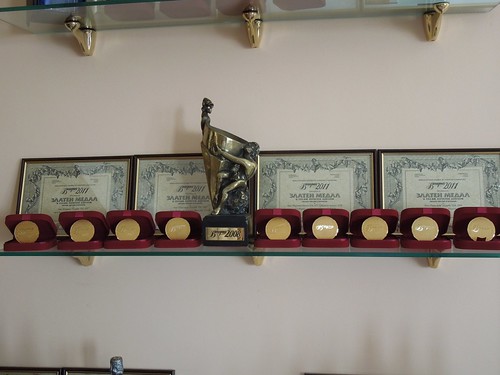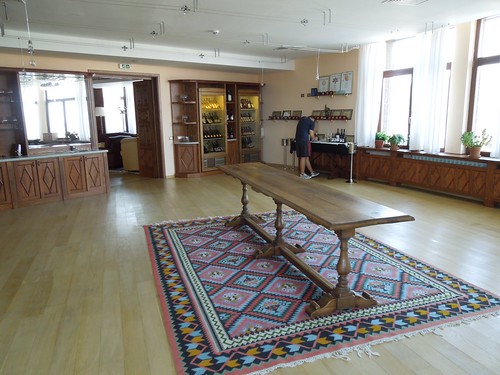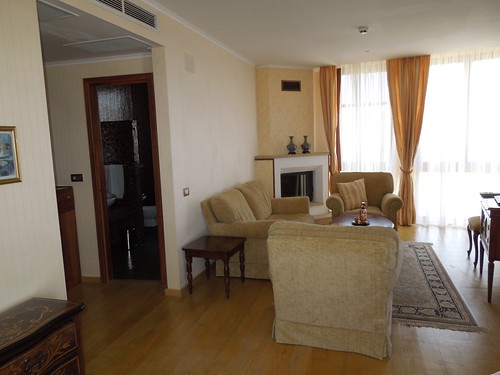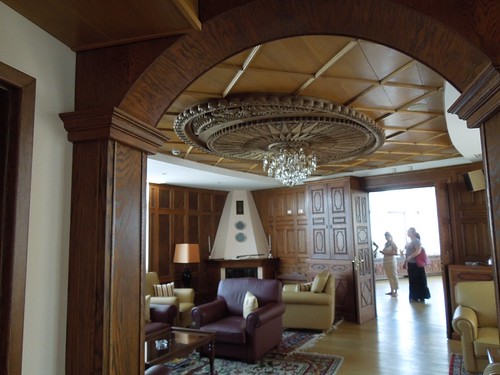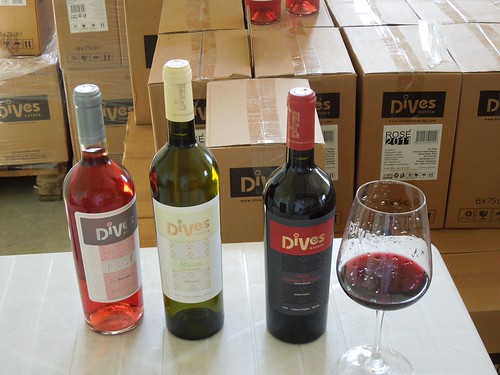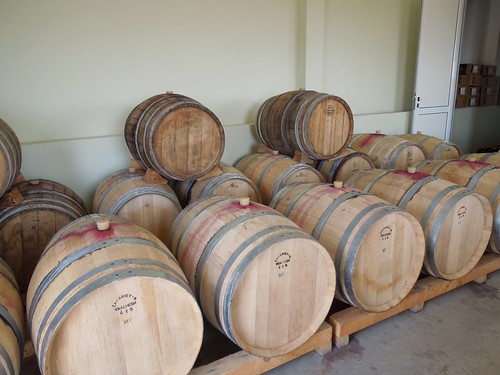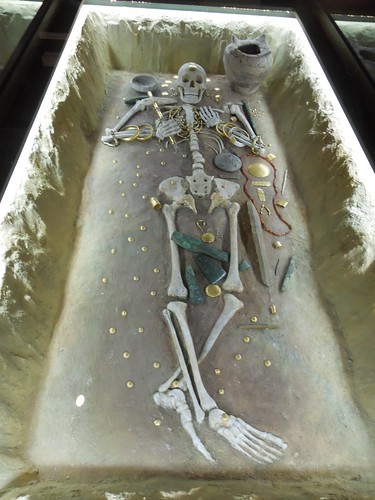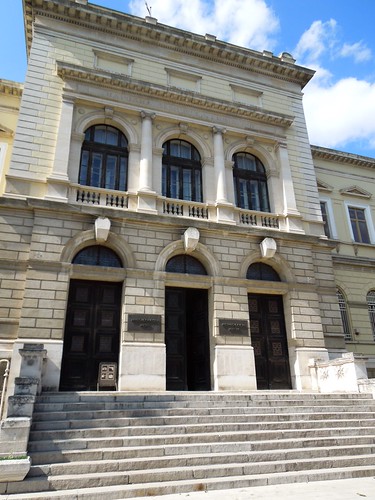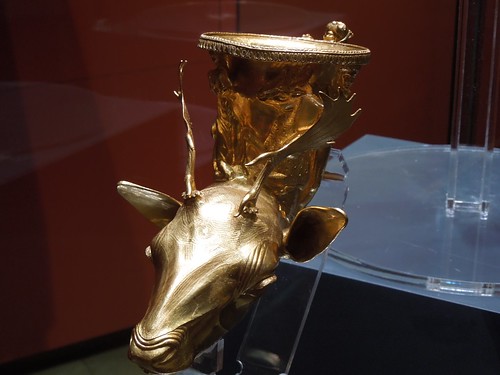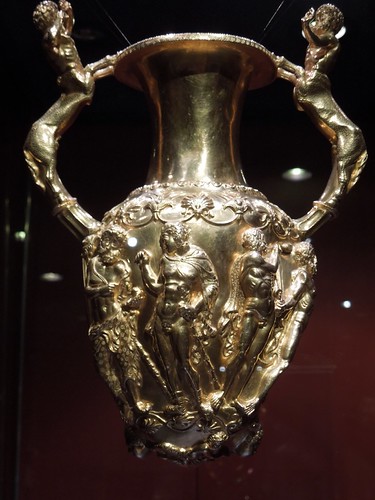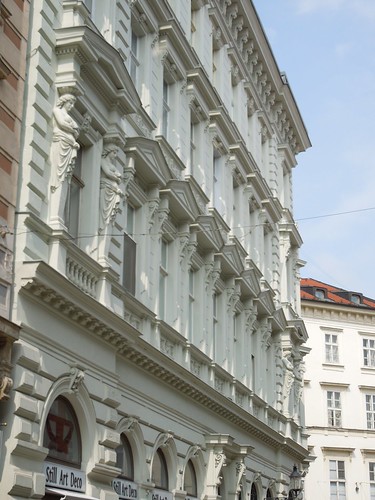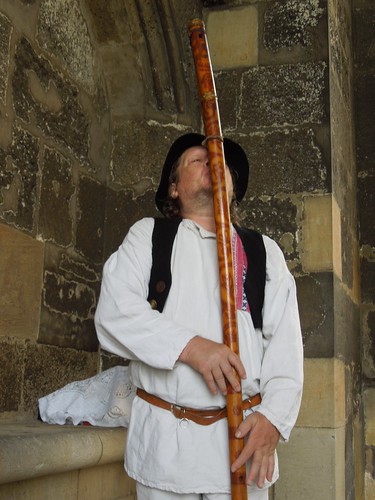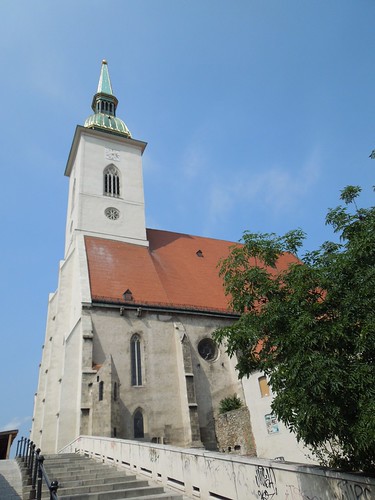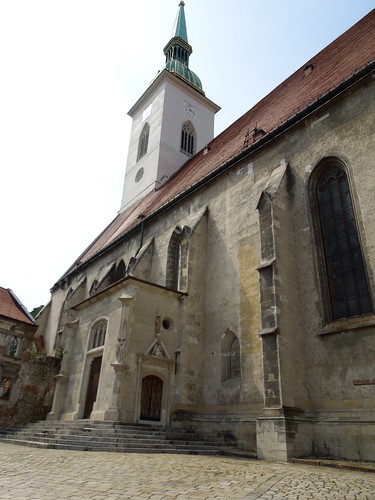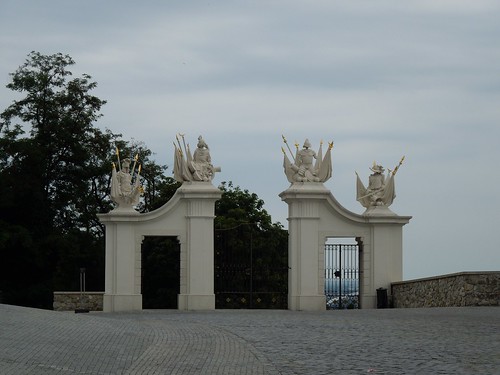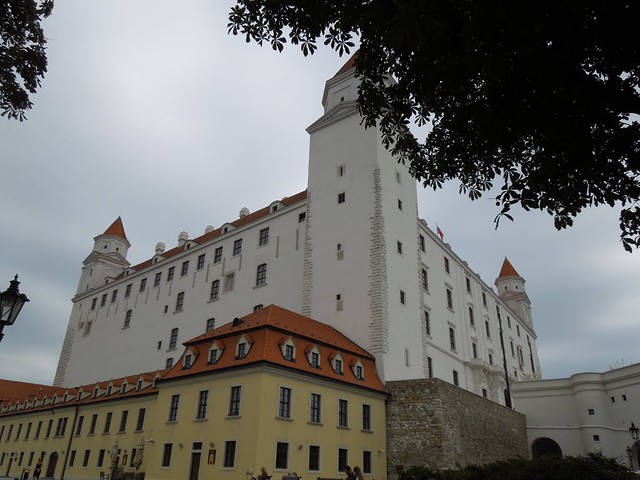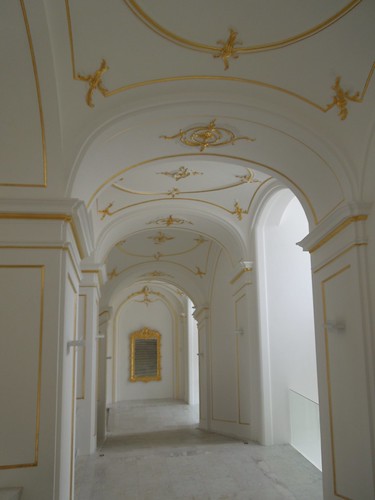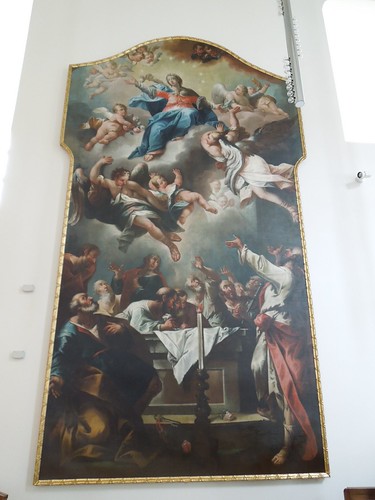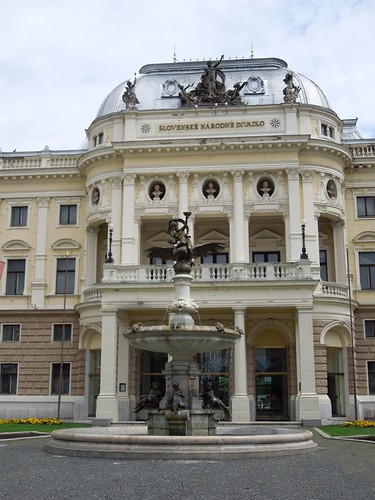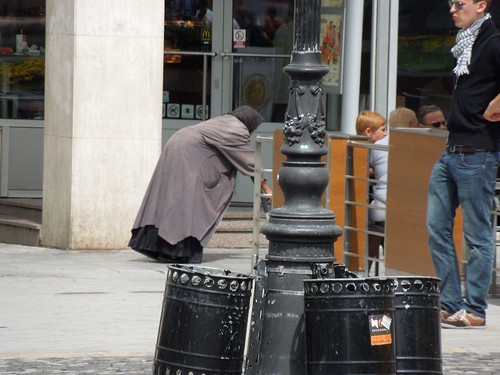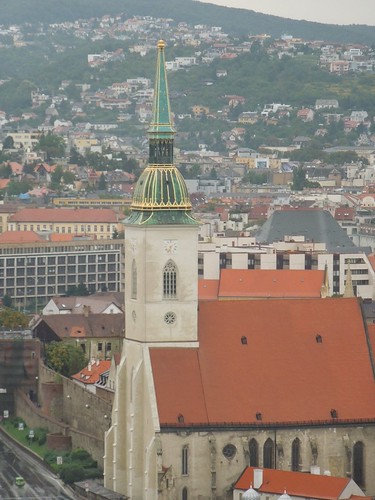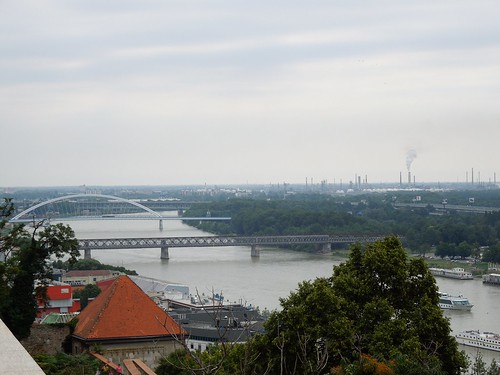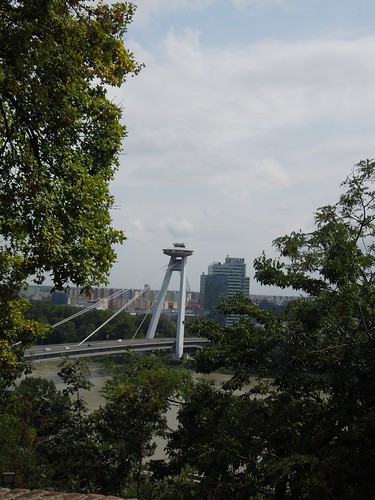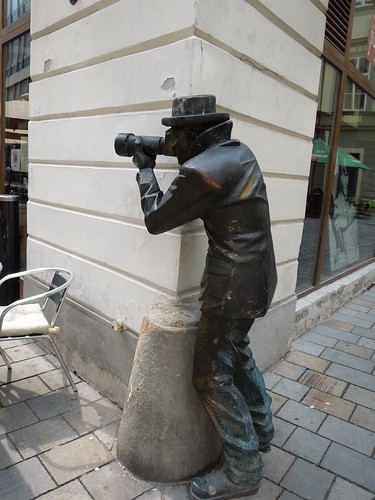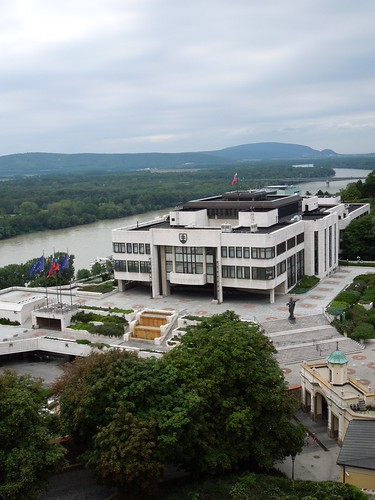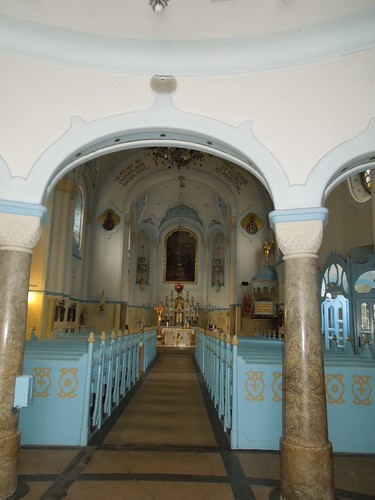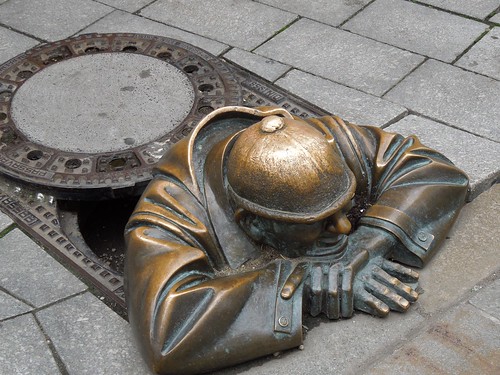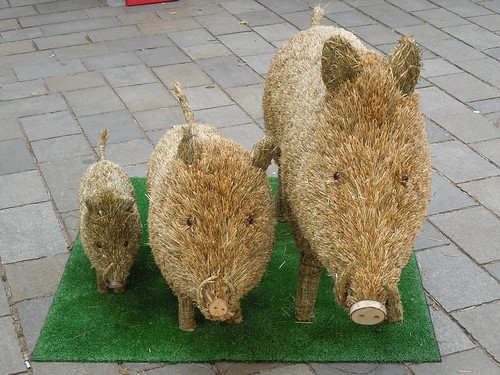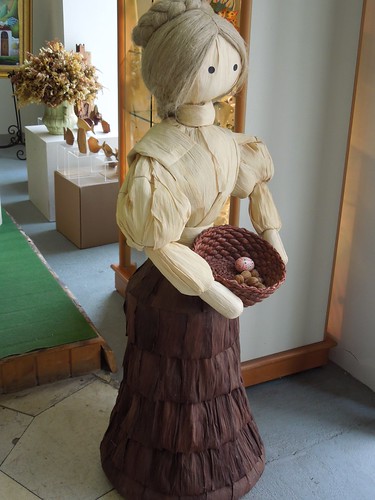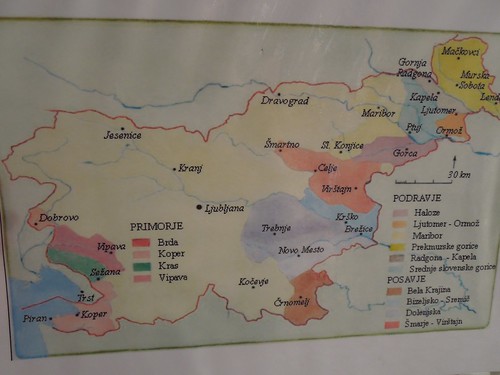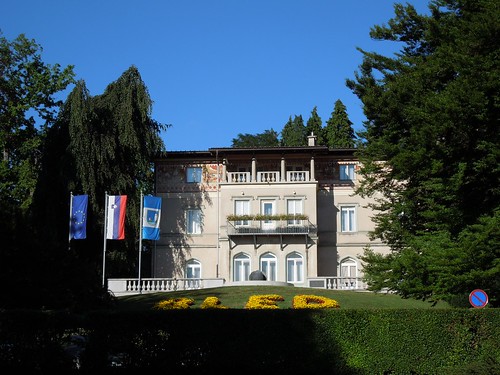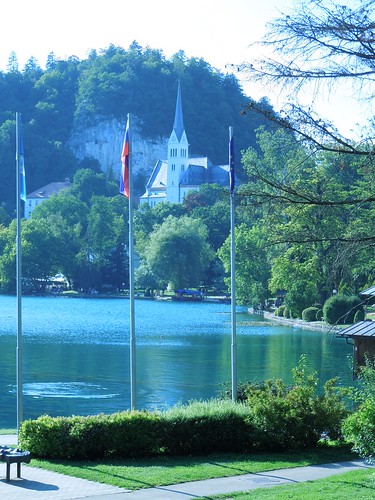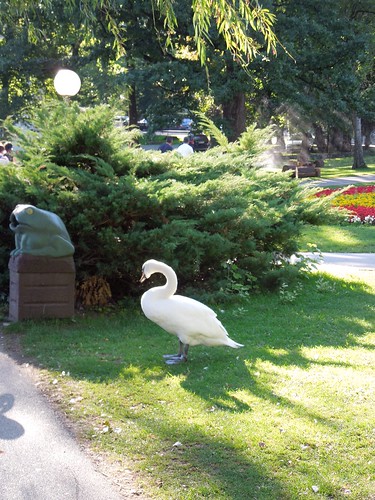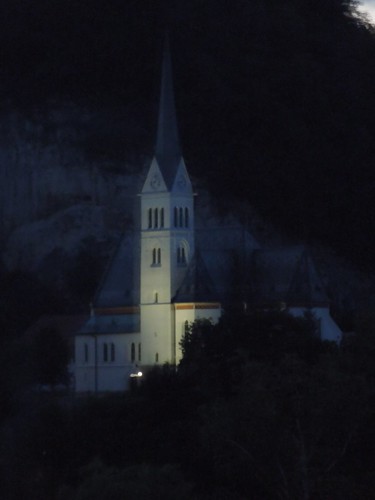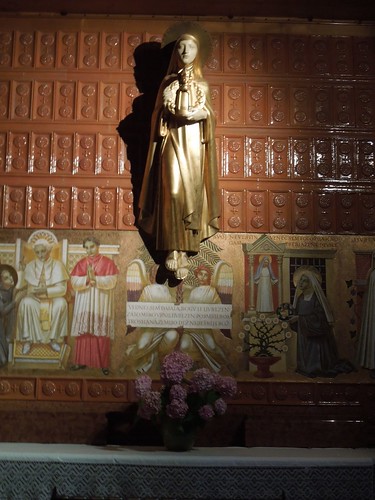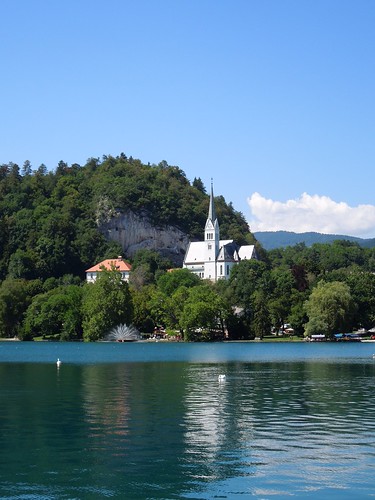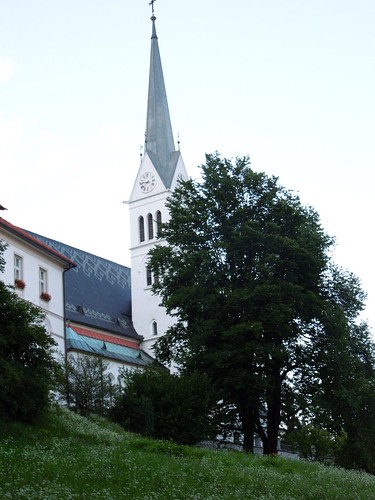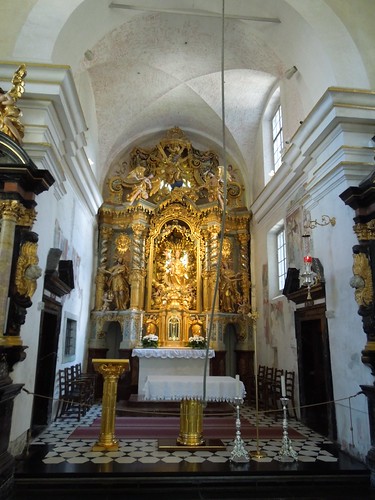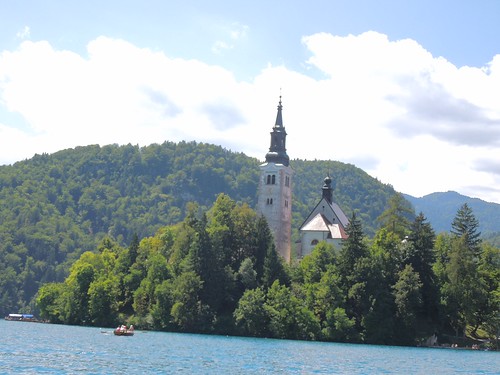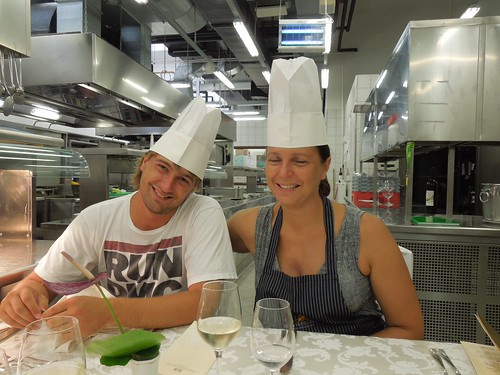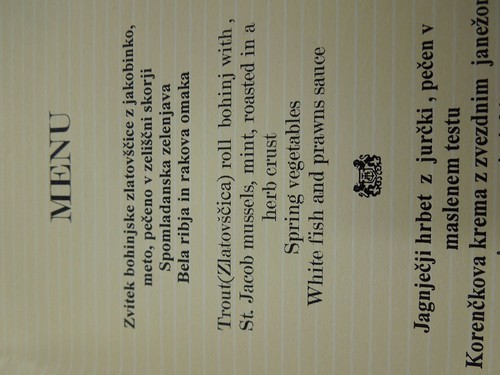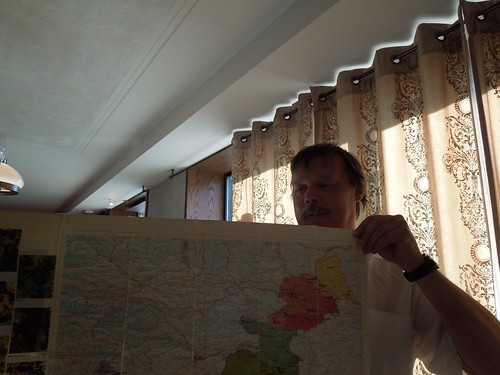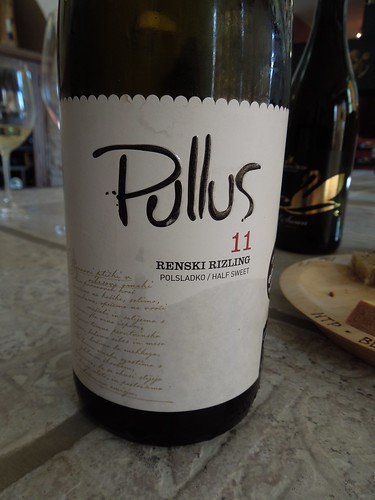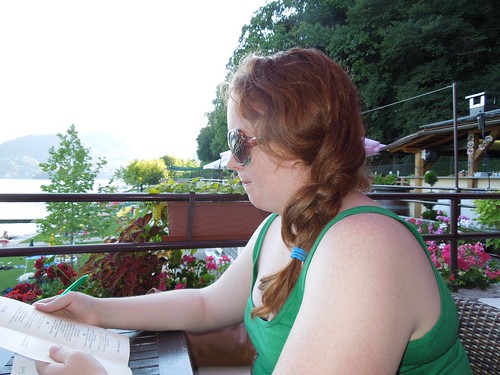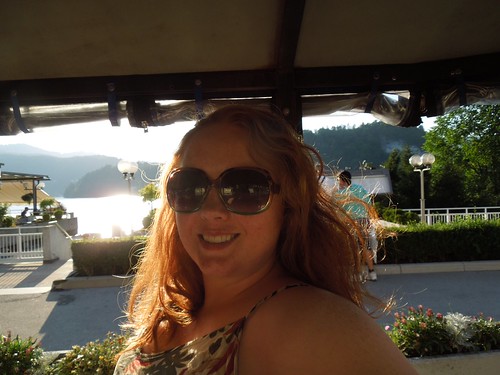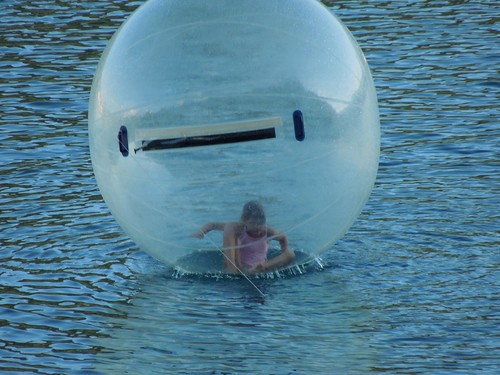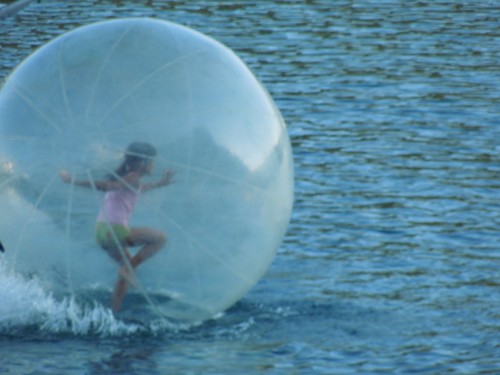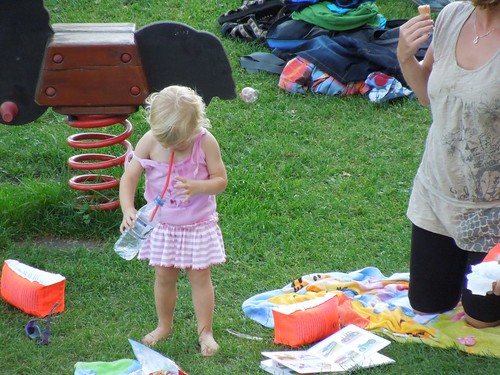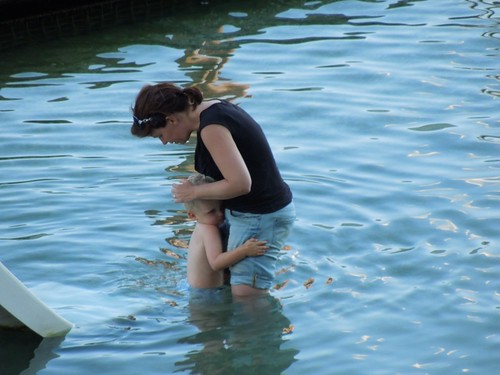Katherine and I drove across Eastern Europe from the film festival in Locarno, Switzerland.It took us three days to arrive at the wonderful villa on the coast of Bulgaria. We spent one night in Zagreb, Croatia; and one night in Sofia, Bulgaria. We then drove 5 hours from Sofia to Kableshokovo, Bulgaria. Kableshokovo is on a hill overlooking the vast coastline of the Black Sea. Our villa is in a gated community of 21 villas. The property is fabulous. The villa has 3 bedrooms and 3 bathrooms. Katherine and I chose the two bedrooms on the second floor with terraces outside the bedrooms with sweeping vistas to the Black Sea. The downstairs has a 3rd bedroom and bath. The living room, dining room and kitchen have an open plan with floor to ceiling windows that overlook the small yard, the swimming pool, and the magnificant coast. The air-conditioning, is "Texas style".All of the owners of the villas are from the UK - mostly Scotland. There is an adjacent gated property with 50 villas,and 20 condos, a large hotel,two large pools, a restaurant,grocery store,and a salon. These too, are all owned by UK families. Most of the renters in the two propertes live in the UK. There is the occasional Russian family. However, the Russians are present in the coastal towns here. The weather has been perfect. The days average between 88-85 degrees, and quickly drop to 70-75 when the sun sets. There is a mild breeze, and the humidity is low. So even during the heat of the day, if you can find shade, it is very comfortable.
Why did we choose Bulgaria? We have traveled in Bulgaria previously,and we have found that the people are very kind, friendly and unassuming. They are very happy to have Americans come so far from home to visit.We've not seen any Americans here. Also, the Black Sea coast is stunning. We wanted beaches, and the Western European beaches are not as vast, long, or deep. The coast here has miles of stretches of beach, with deep beaches, beautiful clear water, and good sand. We quickly found an area that had great cabanas, lounge chairs, tables, and beach boys that served cold drinks and fresh corn on the cob!! Yes, it is a Bulgarian tradition to buy corn on the cob from street vendors during the corn season. We enjoyed our house during this time. Since we have spent the last 4 months site seeing and driving almost every day (our car has 13,000 miles on it!), we were happy to read,write,enjoy the pool and the beach. We took one side trip and spent the night away one time, but it is fun to do nothing for a month.
The cost of living in Bulgaria is ridiculously cheap. They have there own currency, Lev or (BGN). They were accepted to the EU in 2007; when I visited this country in May,2010 the people were all "keen" on converting to the Euro - fortunately they didn't, and there is no talk of it now. The farmers sell their vast array of fruits and vegetables along the road. Fresh peaches,plums,grapes,raspberries,blackberries,and varieties of mellons are the many fruits that have been in season. The vegetables - squash,onions,potatoes,carrots,tomatoes,cucumbers,are many and abundant. Typically, you can purchase several pounds of fresh produce for $1.00. The Bulgarian soil is imbued with a special bio-energy (the herbs are considered the highest quality in Europe),a result of the country's mineral-rich rivers and streams.
A little bit of history.....
Bulgaria, was founded in 681 AD making it the oldest state in Europe. However it has very deep historical roots. In tombs adorned with frescoes in the Valley of the Kings, archaeologists contine to discover beautifully worked golden objects buried with Bulgaria's Thracian forebearers, date to 3,000BC. It has only been in the last 10 years that there has been much excavation. In that short time it has become clear that Bulgaria once was home to the world's most sophisticated goldsmiths. There is increasing evidence that in the Balkan Mountains, Europe's first civilization was born. Fragments and tools found even date back to 10,000BC!!
Most of the unique treasures of Bulgaria lie in the Valley of the Kings; Ancient Roman ruins line the cobbled streets of Plovdiv; in the medieval university town of Veliko Tarnovo, and in the architectural museum towns snuggled deep in Bulgaria's terrain the country is an undiscoverd gem. It is an adventure driving through the country.There are still farmers in rural areas that drive wooden carts pulled by a horse with hay stacked up high in the back. Parts of rural Bulgaria are not in the 21st century - only 27% had a bank account, and 60% never had dealings with a bank (although, that might not be a bad idea).The infrastructure is decent. There are two new highways connecting East and West. The tourism is on the increase, however in their many UNESCO sites, there is no English spoken;e mails are not returned; and the phone is not answered. They have a very long way to go, to attract tourists from the West.
Little is known of the Thracian tribes who were described as "savage,bloodthirsty warriors". In the 5th century the Bulgars were absorbed by the Romans. In 681 Khan Asparoukh claimed the First Bulgarian Kingdom which included Serbia,Macedonia and parts of northern Greece. In 855 Cyril and Methodius created the Glagolic alaphabet (Cyrillic) primarily to translate the Bible into their own tongue. In doing so they created an independent literatry tradition for Slavic and Russian communities. The Ottomans invaded in 1398 and ruled for 500 years "Yoke of Opression". In 1876 design and art "National Revival" or "Bulgarian Renasissance" led to the April Uprising. Russia intervened and drove the Ottomans out in 1877. For this the Bulgarians are permanently in Russia's debt. Bulgaria sided with Hitler in WWII, hoping to be free of Russian domain. However, the Russians maintained control, appointing the hard-line dictator Todor Zhivkov who ruled until 1989. Even when the USSR was abandoned, the Bulgarians remained "loyal". It wasn't until the late 90's that they established their own government. Of course during Communist times, English was not available as a second language. So, like most of Eastern Europe, the only English speakers are under 25.
BULGARIAN WINES
There is much evidence that the Bulgarians were the first wine producers in the world. They date their wine production to Thracian time (8th century BC). And we all know that the Greeks drank wine before the Romans did! The country has officially named 5 viticultural areas. The climate and the mineral rich soil is perfect for all different types of wine production.The Black Sea, where we are staying produces 30% of all of the white wine in Bulgaria. Savignon Blanc,Misket, Ottenel and Dimiet. These are varietal local grapes, and produce blends that are harmonious with crisp, delicate and lightly fruity in flavor.
The Bulgarians are the second largest exporters of bottled wine in the world, only after France. Most of their production goes to Russia (the low end), China and the Benelux countries.
Their outstanding red wines are grown in the "Rose Valley", or the Valley of the Kings. Their unique grape is called Mavrud - a full bodied, spicey red that can age for up to 8 years. It reminds me of an "old vine" zinfindel. The name Mavrud came from an ancient legend. The ruler Khan Krum ordered all of the vineyards to be destroyed. Later a lion escaped and terrorized the city. Mavrud, a young man, killed the lion and saved the city. When his mother was asked what made the young man so fearless? She had saved a vine, and the young man had drunk wine from the grapes, and hence the name Mavrud to the grape.
We visited the winery of Edoardo Miroglio. He is a famous Italian wine producer who purchased 600 acres of land in central Bulgaria in the Valley of the Kings. He has cultivated every grape varietal - French imported, and Bulgarian grapes. Cabernet,Pinot,Mavrud,Muscat Ottenel, Chardoney to name a few. He has invested $25million in to his wine business since 2002, and has achieved an outstanding reputation. He is producing 1 million liters of wine a year. He has an elegant hotel, restaurant and tasting room on top of his wine cellars. We drove to this area - which is truly in the middle of nowhere - and saw this exquisite structure on top of a hill surrounded by acres and acres of grape vines. We tasted serveral wines, and bought 8 bottles of wine for 200BGN - $120. One of the bottles we purchased was his most expensive premium wine - which was 50BGN - $30 a 2009 Gold Medal winner Soli Invicto (The Unconquered Sun)a Merlot,Cabernet Sauvignan,Cabneret Franc and Syrah blend. So the rest of the wines cost $12 a bottle. By the way, you can rent an "apartment" in his boutique hotel for $83/night, includes breakfast. The rooms are exquisite...large living room,dining room combo., bar with refriderator,large bathroom, and large bedroom, with a terrace overlooking the valley.
We visited the winery across the meadow from our villa. The Dives Estate. The owner just purchased the vineyard , and had his first 2009 Merlot,Cabernet Sauvignon. His winery was a lot smaller than Edoardo Miroglio's operation, however, he was planning to enlarge his operation. His wines were interesting, however, not as complex as Miroglio's.
VARNA
Driving to Varna north of Pomorie (our beach town) , we note that the Coast of Bulgaria is littered with one condo project after another, making it indistinguisable from leaving one town to the next. Varna boasts the best Archaeological Museum in Europe. Varna is Bulgaria's main naval and commercial shipping port.The foundation of the town is dated to the 6th century BC - it's ancient name is Odessos. Odessos maintained its position of an advanced economic and cultural center until the end of the 6th century. When the Bulgarian state was formed in 681AD little is known of Odessos (now Varna). What is known is that in this area, the "oldest gold" in the world has been found. Also, some pieces of flint have been dated to 10,000BC.
THE PANAGYURISHTE TREASURE
This treasure is one of the most exquisite and largest gold collection ever seen in the history of the world. The Thraians (part of Greece) were the last to be discovered. Deprived of their own written tradition, the idea about the Thracians , lived a quiet and monotonous life in the shadow of the ancient Greek civilization to the south and the world of the Scythians to the north. In 1949 two farmers discovered in the heart of Thrace one of the most remarkable ever gold treasures, known as the Panagyurishte Treasure. The treasure consists of nine richly decorated vessels made of solid gold. Shaped like a goat's body, female heads, and a phiale. The set has been used for drinking of wine in religious ceremonies. It is difficult for the mind to grasp that these beautiful gold treasures were from the 5th Century BC!!!
